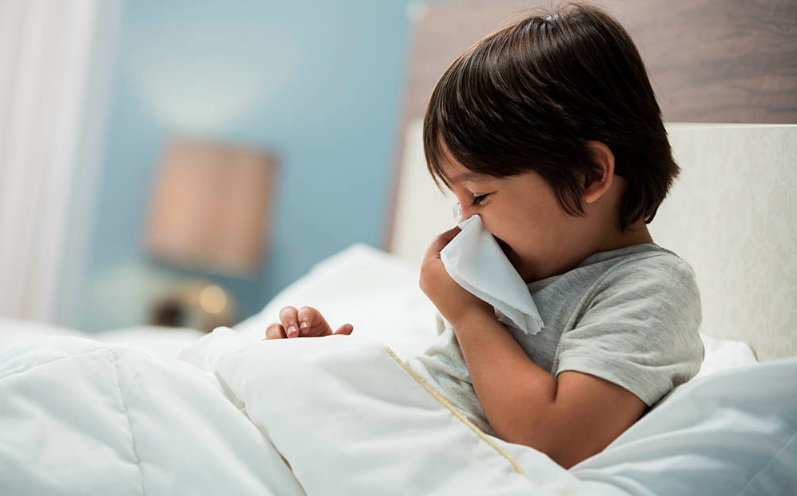
As the new school year kicks off, excitement fills the air, and kids reunite with friends and classmates. However, alongside this excitement often comes something less welcome: sickness. It’s a familiar story for many parents—within the first few weeks of school, kids start showing symptoms of colds, stomach bugs, and other common illnesses. But why does this happen every year?
Why Kids Get Sick at the Start of the School Year
1. Mixing Germs in Large Crowds
Schools are perfect breeding grounds for germs. After a summer spent at home or in smaller groups, kids suddenly find themselves in crowded classrooms, playgrounds, and cafeterias. The close quarters and frequent contact mean that germs spread quickly. Children may also be exposed to new germs that their bodies haven’t encountered before, leading to illness.
2. Weaker Immune Systems
Over the summer, children’s immune systems may not have been as challenged as they are during the school year. When they return to school, their bodies must quickly adapt to the constant exposure to different pathogens. This adjustment period can make them more susceptible to getting sick.
3. Increased Stress and Fatigue
The start of a new school year can be stressful. Kids may experience anxiety about new classes, teachers, or making friends. Additionally, early wake-up times and busy schedules can lead to fatigue, which can weaken the immune system and make children more prone to illness.
Common Viruses on the Rise in Early August
As schools begin in early August, certain viruses tend to be more prevalent. These include:
– Rhinovirus (Common Cold): The most common virus that kids pick up is the rhinovirus, responsible for the common cold. Symptoms include a runny nose, sore throat, and sneezing.
– Enterovirus: Enteroviruses, including hand, foot, and mouth disease, often spike in late summer and early fall. Symptoms include fever, mouth sores, and a rash on the hands and feet.
– Gastrointestinal Viruses (Norovirus): Stomach bugs that cause nausea, vomiting, and diarrhea also tend to increase as kids return to school. These can spread rapidly in close quarters.
– Respiratory Syncytial Virus (RSV): While typically peaking in the winter, RSV cases can begin to rise as early as August. It can cause severe respiratory illness in young children.
Tips for Getting Kids to Wash Their Hands
Handwashing is one of the most effective ways to prevent the spread of germs and keep your child healthy. However, getting kids to consistently wash their hands can be challenging. Here are some tips to encourage this essential habit:
1. Make It Fun:
Turn handwashing into a game by singing songs or using colorful soaps with fun scents. For younger children, you can use a timer to see if they can scrub their hands for 20 seconds (the recommended duration).
2. Lead by Example:
Children are more likely to wash their hands if they see their parents doing it. Make a habit of washing your hands together before meals, after using the bathroom, and after coming home from public places.
3. Create a Routine:
Establish specific times during the day when handwashing is a must, such as before eating, after recess, and after using the restroom. Consistent routines help make handwashing a habit.
4. Use Visual Reminders:
Place colorful signs or stickers near sinks to remind your child to wash their hands. You can even make a checklist that they can check off each time they wash their hands.
5. Reward Good Behavior:
Positive reinforcement goes a long way. Consider using a reward system where your child earns a small prize or sticker each time they wash their hands without being reminded.
How to Help Kids Remember to Wash Their Hands
1. Create a Handwashing Chart:
A visual chart with checkboxes can help kids remember when to wash their hands. Make it interactive and place it somewhere they can easily see it.
2. Set a Phone or Watch Reminder:
For older kids with smartphones or smartwatches, setting reminders at key points in the day can help them remember to wash their hands.
3. Use Hand Sanitizer as a Backup:
If soap and water aren’t always available, keep a small bottle of hand sanitizer in your child’s backpack. Teach them to use it after touching shared surfaces.
4. Make It a Group Activity:
Encourage your child to wash their hands with friends or siblings. When handwashing becomes a social activity, they’re more likely to remember to do it.
The start of the school year is an exciting time, but it’s also a time when germs can spread quickly. By understanding why kids get sick and taking proactive steps to prevent illness, you can help your child stay healthy. Encouraging proper hand hygiene, building strong routines, and being aware of common viruses can go a long way in keeping the back-to-school germs at bay.
As always, we’re here when needed. To schedule an appointment, please contact our office at 404-252-4611 or submit an appointment request via our ‘Contact Us’ form on our homepage.
